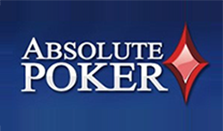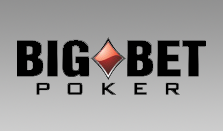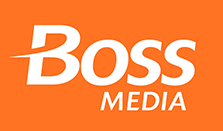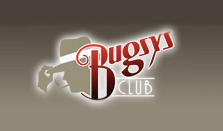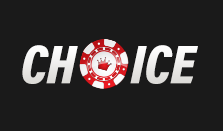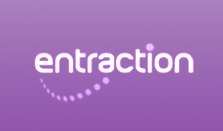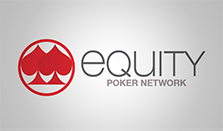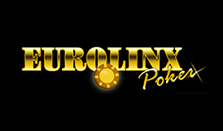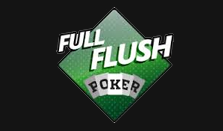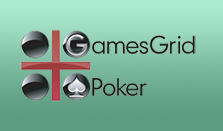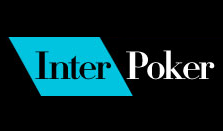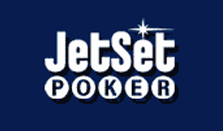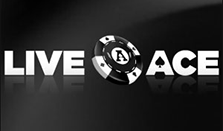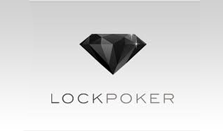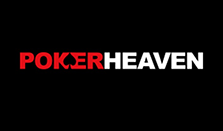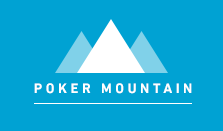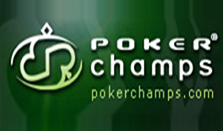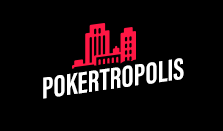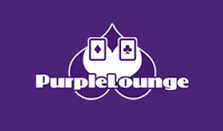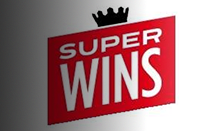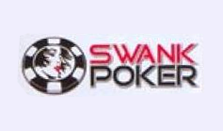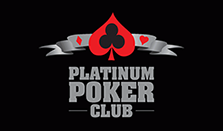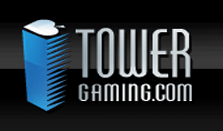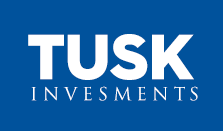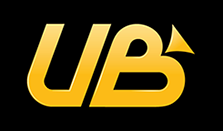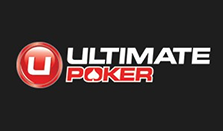Failed Poker Sites
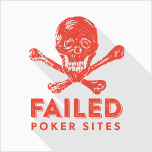 Most online poker rooms are safe. In those cases, the business is properly licensed and well-capitalized. Many are publicly traded companies with more than a decade of experience in the industry.
Most online poker rooms are safe. In those cases, the business is properly licensed and well-capitalized. Many are publicly traded companies with more than a decade of experience in the industry.
Unfortunately, there are poker sites that are not legitimate. These companies may not have launched with the intention of not paying players but it happens. These poorly managed poker sites or outright scams take deposits from players and in the end do not pay. Most disappear from the internet without a trace or comment. The following is a list of these failed poker sites.
The Graveyard
Dozens of poker sites have failed since the industry launched in the late 1990’s. Most went out of business due to poor management. Some operated by known fraudsters with that seemed like the intent to steal money from poker players. A few of the sites on the list left the industry with honor. These businesses paid players in full during an orderly shuttering of the operations.
- 24hPoker
- Absolute Poker
- BetOnSports
- Big Bet Poker
- Boss Media
- Bugsy’s Club
- Cake Poker
- Cardspike
- Cereus Poker
- Choice Poker
- Cryptologic
- DoylesRoom
- Entraction
- Equity Poker Network
- Eurolinx
- Everleaf Gaming
- Full Flush Poker
- Futurebet
- Gamesgrid
- Interpoker
- Jet Set Poker
- Jungle Poker
- LiveAce Poker
- Lock Poker
- Pitbull Poker
- PKR Poker
- Poker Heaven
- Poker Mountain
- PokerChamps
- Pokershare
- Pokerspot
- Pokertropolis
- Purple Lounge
- SealsWithClubs
- Skillbet
- Superwins Poker
- Swank Poker
- The Platinum Poker Club
- Tower Gaming
- Tusk Investments
- Ultimate Bet
- Ultimate Poker
- Victoria Poker
- Victory Poker
- Wingows Poker & Walker Poker
- World Sports Exchange
- YourPoker Network
24hPoker was the main site on the B2B Network, later referred to as the IGT Poker Network. IGT acquired the platform with the intent of using it in the United States one day. That never happened.
24hPoker later merged its brand with Noiq Poker, a former iPoker skin. The latter brand was retired in 2012.
Absolute Poker launched in 2003 under the company name Absolute Entertainment SA. The company was based in Costa Rica but held a gaming license through the Kahnawake Gaming Commission (KGC). The KGC is located on sovereign tribal land just outside of Montreal, Quebec. While the company licenses some legitimate online gaming companies, there have been several stories of failures coming from KGC licensed companies.
BetOnSports was a sportsbook that offered online poker as an afterthought. The site use a turnkey version of Dobrosoft software, something common at the time. The poker site had a low level of traffic for its era. It attracted mostly casual sports bettors that were looking for some action between games. The tables were loose due to this. BetOnSports shuttered in 2006 after officers in the company were arrested in the U.S. for violating gambling laws.
Big Bet Poker was the name of two separate online poker rooms during different eras. One was an Odds On site that launched a unique platform in 2003. In 2009, Big Bet Poker opened as a skin on Merge Gaming. Both operations were short-lived. Neither lasted more than two years. The two versions of Big Bet Poker were only related by name; there were different owners for each operation.
Boss Media (and later IPN) was a poker network that during its height was a medium sized network home to some of the most popular – but mostly casino — brands of the day. Paradise Poker, Poker Heaven and Fortune were a few of the notable poker rooms making their home on the network at one time. The network had below average software and after United States players left in 2006 was never really able to find its niche. This was despite the fact that games were very juicy for much of its history.
Bugsy’s Club was an online poker room that was created to compliment Poker School Online. That was one of the first online poker coaching sites. The software at Bugsy’s Club was one of the worst in the industry, even for its time. This hurt its ability to retain players. Bugsy’s Club was one of the few poker sites that had more tournaments than cash games. This was due, in part, to its great structures that included antes.
Cake Poker was the flagship poker room on the small to medium-sized network of the same name. During their existence, they primarily catered to players in the United States. They launched during the height of the poker boom and featured a variety of attractive promotions centered around Gold Coins and Cards, which help grow traffic. As players moved to larger sites and cashouts slowed significantly, traffic suffered. They were eventually acquired by Intertops.
Cardspike was a Cake Poker/Revolution Network skin that came almost as soon as they arrived. They suffered controversy from the start, including a questionable ownership, unpaid rakeback and poor treatment of affiliates. Fortunately, Cardspike quickly went out of business and players were mostly paid.
Cereus was a poker network with the worst reputation in online poker history. It combined the two sleaziest poker sites; Absolute Poker and UltimateBet. Both sites had individual insider cheating scandals as well as numerous issues behind the scenes with management. Players were not fully reimbursed with all funds that were lost in the cheating scandals. Those that were paid received money from player deposits. This was a contributing factor in the network’s failure.
Cereus and two of its officers were indicted on Black Friday, which is April 15, 2011. The site collapsed not long after that. Player losses were at least $45 million. Investors lost everything.
The U.S. Justice Department opened up a claims process for victims of the Absolute Poker and UltimateBet scams. Affected players may go to Absolutepokerclaims.com to file a claim.
Choice Poker launched in January 2004 and closed later that year. The site used Dobrosoft software. It had a few skins that moved to the Americas Cardroom network before eventually folding themselves. These included Adult Poker Tour and Mega Comps Poker. Choice Poker handled all of the banking. When it failed, it took the skins with it.
Choice Poker had few players and managed to lose all deposited funds. Management blamed the losses on their credit card processor. It seemed like incompetent and experienced operators to most players familiar with the site. Players were given a bailout offer by Americas Cardroom.
Cryptologic was a medium sized poker network that that housed less than a dozen poker sites. Interpoker, Littlewoods, Sun Poker and Poker Plex with were a few of the poker rooms that made their home on the network. Also well-known for their casino software, Cryptologic gained popularity in the early days for its attractive bonuses. Unfortunately, Cryptologic poker traffic tanked after the UIGEA and eventually closed in 2009.
The online poker room endorsed by Doyle Brunson, Doyles Room was many of the small to medium poker sites that thrived in the wake of the online poker boom. They were the victim of a bad luck as three of their network homes either decided to leave the United States or ran into financial issues. Doyles Room eventually rebranded/merged with Americas Cardroom after Black Friday.
Entraction was a European-focused poker network which launched in 2004. They were home of dozens of turnkey skins that included poker rooms such as 24h Poker, Good Guys Poker, NoiQ Poker and many others. Although a niche-site for some players who preferred the euro currency, the site never extended behind its medium sized status. The network closed in 2011 after it aggressively cut off players in grey markets.
Equity Poker is one of the newest networks in online poker. Unfortunately for those that made deposits, it is also one of the most recent to fail. The site closed in September 2016. There were only two skins left on Equity Poker when the network collapsed. Full Flush Poker was the largest. The other was Heritage Sports. Full Flush Poker stiffed all players. Heritage Poker honored all balances.
Eurolinx was a poker room that was on the Microgaming Network for much of its history. They grew in stature due to a heavy focus on lucrative player promotions. The same model which led to their success also led to their downfall as the site was paying way more out than it was bringing in. In the wake of Eurolinx’s failure, many felt dismayed at the lack of bailout from Microgaming.
Everleaf was a small network of poker rooms that existed from 2004 to 2013. The network consisted of Poker4ever, Minted Poker and others. Many of the players who drove their traffic played as props or for rakeback rewards. They continued to accept U.S. players through their entire existence until operational pressures forced them to close, where they failed to play players.
Full Flush Poker was the flagship of the Equity Poker Network. This platform included big names like Poker Host and 5Dimes in its early days. The network began forcing skins to ban winning players. This caused skins to leave one by one. At the end, only Heritage Sports and Full Flush Poker remained. Full Flush experienced slow payouts starting in 2015. By 2016, it was out of business. Full Flush did not pay players. Heritage Sports did.
Futurebet was/is a group of poker, casino and sports brands which have left a trail of stink wherever they have went. As far as their online poker impact, they have run major scams on both the Ongame and Dobrosoft Networks. These actions may very well make them one of the biggest scams in online gambling history and should be 100% avoided wherever they decide to open up a brand next.
GamesGrid was an independent poker room that launched on the heels of the Chris Moneymaker boom of the mid 2000’s. They never really got off the ground and most of the players who populated the games were props. When UIGEA was passed in 2006, GamesGrid stopped accepting U.S. players and what traffic they did have collapsed.
Interpoker launched as the flagship of the Cryptologic Poker Network. Cryptologic owned Interpoker. The company was already a successful online casino company under the Intercasino brand. The poker network opened in 2003. U.S. players were banned in October 2006. This made it difficult for Cryptologic to compete in online poker, especially since it did not improve its software as competitors invested heavily in that aspect of the product line. It shuttered in 2009. Interpoker moved around networks until 2016 when it closed for good.
JetSet was a small, independent niche site most well-known for its animated software. They launched at the right time just as the Moneymaker boom was happening, but they never gained much traction with players. JetSet Poker closed shortly after the UIGEA passed in the United States. JetSet Poker never paid players the money that was owed.
Never having that much action at the tables, Jungle Poker still managed to last for three years. They were the most prominent poker room on the Dynamic Gaming Systems network, which housed other small small poker rooms. They gained some players in the wake of the UIGEA but ultimately were a casualty of poor management and quite possibly a scam from the start.
LiveAce was a short-lived subscription site. It only accepted players from 31 states. Those were Alaska, Arizona, California, Colorado, Connecticut, Delaware, Hawaii, Illinois, Indiana, Kansas, Kentucky, Maine, Maryland, Nebraska, Nevada, New Hampshire, New Jersey, New Mexico, New York, Ohio, Oregon, Pennsylvania, Rhode Island, South Dakota, Texas, Utah, Vermont, Virginia, West Virginia, Wisconsin, and Wyoming. Washington DC was also accepted.
Players were required to pay $19.95 per month. This entitled them to 1,600 chips per month to start. There was also a 1,600 chip monthly bonus. Players could top off when falling under 400 chips. Dwolla and checks were accepted for payment. There was also a free option that gave a handful of chips to players.
The LiveAce product was not in demand. Adding the lack of payment processors and open states led to the demise of LiveAce.
Launched in the aftermath of UIGEA, Lock Poker showed tremendous initial promise and at one point was on the edge of the top 5 sites accepting United States players thanks in part to attractive player promotions and solid marketing. However, throughout much of its history, Lock Poker was plagued by cashout issues and poor management which ultimately doomed the site and harmed each of the networks they called home. By all accounts a terribly run poker room, Lock Poker ultimately failed to pay players after huge cashout delays. It is believed they owed players over $1 million.
Pitbull Poker was a small site poker room that launched in 2004. They were hindered by poor software and even during their peak, only microstakes players played on the room. Plagued by prop and bonus abusers as well as insider cheating, Pitbull called in quits in 2009. Unfortunately for players, because the site never gained any notable traffic, they likely did not run off with that much in player funds.
PKR was a part of the online poker industry for 12 years. The site dealt its first real money poker hand in 2005. It had no skins and was one of the last independent poker sites to launch during the boom era. The decline of the online poker industry did not appear to affect PKR like most other sites. That was likely attributed to PKR’s active social media presence. This helped draw casual players to the poker tables. PKR’s 3D software was another factor in drawing these players.
Poker Heaven was one of the most reputable online poker rooms in history. The site offered 30% rakeback to any player that asked for it. There was also a $1,000 bonus that was worth an additional 20% rakeback. Poker Heaven offered freerolls and other perks to players that made it by far the best option on Boss Media, later known as the International Poker Network.
Poker Heaven always paid players in a timely manner. The site accepted U.S. players until the network banned Americans in 2006 after the UIGEA passed.
Poker Mountain was a short lived poker room that initially showed a lot of promise. They were endorsed by the beloved Daniel Negreanu, but were ultimately more well-known by the infamous “Poo Mountain” moniker. Poker Mountain closed in 2006 after the passage of the UIGEA with all players made whole.
PokerChamps was a small poker room most well-known as the site endorsed by Gus Hanson before he joined Full Tilt Poker. The poker room launched with innovative software features but was never that stable. PokerChamps was acquired by Betfair and left the United States market, which saw its traffic numbers hit hard before it faded into obscurity.
Among the first online poker sites, Poker Spot was launched by Dutch Boyd and his brother in 2000. The site was actually the first to offer online tournaments, which gave it some initial buzz among players. Chargeback issues and slow withdrawals ultimately plagued the company, before it was force to close in 2001. Poker Spot failed to pay players an estimated $400,000 and Dutch Boyd’s reputation has not fully recovered.
The timing was right, the execution was terrible. Pokertropolis launched at the peak of the poker boom in 2004 but had a hard time gathering real traffic. Most of the action at the Pokertropolis tables appeared to be bots, significantly tarnishing the reputation and squashing any hopes that the poker room would grow naturally. They folded in 2006 with most players apparently being paid.
Purple Lounge was a long standing poker room which spent most of its time on the Microgaming Network. They shed their US players after UIGEA but appeared to survive as the poker room focused on European players. By 2011, the site was plagued by slow payouts and ultimately closed in 2012 without paying players. The closing of Purple Lounge also had ripple effects on the reputation of Microgaming and Lotteries and Gaming Authority in Malta.
SealsWithClubs was the largest Bitcoin poker site in its early days. This was long before Bitcoin was adopted as a banking option by mainstream poker sites. SealsWithClubs permitted players to join anonymously and change usernames and accounts whenever they felt like it.
Bryan Micon was the chairman and lived in Las Vegas during the operation of SealsWithClubs. This was unusual for unlicensed online poker sites. The Nevada Gaming Commission took exception to that. Regulators raided the Las Vegas home of Bryan Micon in February 2015. The site quickly went dark. Micon was later charged with operating an unlicensed internet gambling business. He fled to Antigua briefly before reaching a plea deal with the Nevada Attorney General’s office.
Despite the failure of skill-based sites before it, Skillbet decided to give it a go in the aftermath of Black Friday. They were legal in 28 states but never garnered much popularity beyond a few niche players. This was despite heavy marketing and some tweaks to the skill-based concept. They closed in 2013 but paid all players.
Superwins launched in March 2014. It was the first skin of Lock Poker on its new platform. This immediately aroused suspicion in the online poker world. The Superwins and Lock Poker websites were identical. Someone even forgot to change some of the terms and conditions. Support departments were the same between the sites.
It was clear that this was some sort of rebranding attempt by Lock Poker. That failed because it was so clear that Lock Poker was involved. Superwins Poker folded with Lock Poker in 2015. While Lock Poker players lost millions, there probably wasn’t much in the way of losses for Superwins players because it is unlikely there were many depositors. No marketing effort appeared and Google results made it clear players should stay away.
Swank Poker was a small Everleaf Network poker room that garnered some attention due to their adult-themed promotions (such as their offer for allowing players to start in an adult movie). Despite the creative marketing of the poker room, Swank Poker was a victim of their network which misused player funds. They closed in 2013 along with the Everleaf network.
The Platinum Poker Club was a small, short-lived poker room which launched in 2004 using the Dobrosoft software. The site had very few real players but did have some poker props. Players complained of cashout issues, which doomed any hope the site had of growing. They closed in late 2004 and did not pay players.
Originally an Ongame site that launched in 2006, Tower Gaming gained prominence as a site offering unlimited bonuses. The promotion toed the line of Ongame Network rules and after some rule changes, made the Tower Gaming model unstainable. They moved to the Cake Poker Network in 2011 and closed within a couple years.
Tusk Investments was a collection of over two dozen white label Microgaming skins which focused on high rakeback rates to attract players. Microgaming rakeback limitations were ignored by Tusk and eventually eCogra suspended the seal and endorsements of Tusk sites. They closed soon afterwards with players receiving 5 cents on the dollar five years later.
One of the first poker rooms to launch in 2011, Ultimate Bet became one of the largest poker rooms in the world. They gained prominence early on as the online poker home of Phil Hellmuth. Site traffic grew significantly as the poker room decided to stay in the United States after the UIGEA passed in 2006. Unfortunately, the latter part of Ultimate Bet’s history was marred in controversy – first with a well-publicized cheating scandal that surfaced in 2008 and then the events of Black Friday in 2011, which sunk the company and led to a complete loss of player funds.
Ultimate Poker was the first regulated online poker to launch in Nevada and the United States, which they happened in 2013. The poker room also launched in New Jersey in 2014. As the first site to launch in Nevada, they led the state in traffic, but both software reliability and banking became an issue for the site. Within 2 years, the Ultimate Poker websites in both states shut down. As a regulated site, all player funds were paid to players, but some players complained that they were not compensated for the value of tournament tickets and VIP points.
The first site to offer a Mac-supported poker room, Victoria Poker launched for play in 2003. Traffic was virtually non-existent for much of its history due to very poor software. Add slow player cashouts to the mix, and Victoria could never attract many players, despite its use of poker props. They closed a year later with most non-prop players being paid.
Victory Poker was founded by Dan Fleyshman. It had a massive roster of pros that included Antonio Esfandiari, Paul Wasicka, Andrew Robl, Sara Underwood, Dan Bilzerian and Jonathan Little. Dan Fleyshman was an entrepreneur that claimed to be the youngest CEO of a publicly traded company in history. He was unable to translate that into a successful online poker business. Victory Poker lasted less than 18 months.
Wingows Poker was a small online poker room which launched in 2006. Originally, on the Dobrosoft Network, Wingows ultimately moved to Dynamic Gaming where it got caught up in Futurebet’s issues. The site closed with no players being paid, although a site called Walker Poker offered previous Wingows players 25% of their balance in rakeback. Walker was eventually acquired by Merge Gaming and players that had balances at that point were paid.
Primarily a sportsbook, WSEX also operated a poker room called the World Poker Exchange. Launched in 1997, the World Sports Exchange became one of the most respected online sportsbooks. WPEX gained prominence as a 100% rake free poker room. As traffic at the site grew, bots and colluders also gradually populated the games. Eventually the site cut and ultimately got rid of their rakeback promotion, which quickly killed the remaining games. Marred by cashout issues and legal troubles, WPEX closed its poker room in 2012 and in 2013 closed WSEX. Players with cashouts going back two years were never paid.
YourPoker Network was a collection of small poker rooms that operated for one year, 2004. The poker network had the highest rake for poker rooms at the time and also had trust issues – which doomed a poker room seeking the approval of newly minted online poker players after the Moneymaker boom. When YPN closed in December of 2004, all non-prop players were apparently paid.
Why Some Online Poker Sites Fail
The lack of regulation in the industry has created situations where disreputable people and organizations were able to open an online poker site. This is due to illegitimate gaming commissions writing regulations where sites essentially pay an Internet Service Provider (ISP) a fee to host the site. These ISPs do little more than ensure that the site is live 24 hours a day. They do nothing to guarantee that funds are held in a secure account, nor do they punish criminals that steal deposits and winnings from players.
This scenario has played out too many times in the online poker world. Curacao may be the worst offender. It is the regulatory body that oversees Lock Poker, which owed over $15 million to players before it failed in April 2015. Cake Poker and Full Flush Poker are other sites that collapsed under the watch of Curacao regulators.
The Malta Lotteries and Gaming Authority (LGA) is another online gaming commission that has done nothing to help protect players, yet collected millions from sites it licensed. Everleaf Gaming, Stryyke, and Eurolinx are just a few examples of sites licensed by the LGA that ran off with player funds under its watch. It has never offered to reimburse victims with funds it made off taxes paid by these rogue sites.
Warning Signs that a Site is Failing
 Failing sites often give many signals that there are problems with its liquidity. Late payments are the most obvious sign that the site is in trouble. There are usually several other red flags that appear leading up to that.
Failing sites often give many signals that there are problems with its liquidity. Late payments are the most obvious sign that the site is in trouble. There are usually several other red flags that appear leading up to that.
Sites in the early stages of a failure may offer an absurd deposit bonus. This could be reflected in terms that seem too good to be true. For example, a site offering a reload bonus that returns more than 100% rakeback could signify that the site is in dire need of cash.
The lack of timely responses from site employees is another signal that the site may be in trouble. If the site has a forum, or it has a thread at TwoPlusTwo.com, and player complaints are being ignored, then the site may have laid off its support staff. It may also be evidence that the site simply no longer cares about its players.
If live support used to be available 24 hours a day, but the site no longer answers these calls or chats, that is another sign that the poker room is no longer serious. Ignored emails can be another way to determine that the poker site does not care or is in trouble.
A drastic drop in traffic can be another sign of problems. Players that are not getting paid will stop giving action to a site. That is because it is a waste of time to give action to an online poker room that is not processing withdrawal requests. PokerScout.com charts the action of virtually every online poker room. This information can be used to help determine if a site is no longer profitable or if players are fleeing.
Safest Poker Sites publishes a weekly blog that covers the online poker industry. Make sure to check it out every weekend to see if conditions at your favorite poker sites have changed. We will always report if a site has stopped paying players or has experienced a major setback.
Concern About an Online Poker Site?
A poker site can be online and struggling at the same time. If support emails or cashouts are taking longer than usual, that may be a sign of trouble. Another issue to look for is whether the website gets updated in a timely manner. A poker site that shows promotions from months ago is certain to be having management issues. Tournaments that repeatedly have large overlay can be another sign of trouble. Poker sites cannot eat these types of losses for a long time. An attempt by a site to get you to reverse a withdrawal is another issue to look out for.
If you are experiencing trouble at a poker site, we would like to know. Please include all of the details of the problem.


